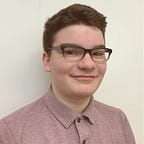SF Needs Both District and Citywide Supervisors
Historically, San Francisco has gone back and forth between District and Citywide Supervisors. In 1976, San Francisco voters first moved from Citywide to District Supervisors. A proposition passed creating Districts, each with approximately the same population, and each District elected one Supervisor. Proponents for District elections argued that this would diversify the Board and be more representative of specific neighborhoods. It worked. Ella Hill Hutch became the first female African American Supervisor, Gordon Lau the first Asian American, and Harvey Milk the first openly gay supervisor.
In 1980 the system was switched back to Citywide, and in 1994 the issue rose again and Proposition L created an “Election Task Force,” which put District elections on the ballot again. Voters approved the move back to Districts for the 2000 election and it has been the same ever since. In San Francisco, we currently have 11 Supervisors, each elected from approximately equal population districts.
Now in 2020, in a growing and changing city, it is time to revisit this issue. I propose we elect both Citywide and District Supervisors in San Francisco to address the challenges facing us.
Housing, education, public transport, homelessness, and public safety are all major issues that cross supervisorial Districts and affect every San Franciscan. With legislators only representing their District, it is hard to tackle these citywide issues. For example, Supervisors generally agree that we need to build more housing, but many of their constituents do not want more housing built in their neighborhood because it could reduce their property values, thus risking that Supervisor’s re-election. Similarly, many Supervisors support building more homeless navigation centers, but not in their specific district as locals may object. If we had Supervisors working at the citywide level, they could focus on improvements to the city as a whole and move past our local gridlock.
Expanding the Board to include Citywide Supervisors would increase overall representation without undermining community representation. Castro neighbors, who live in a historic district for LGBTQ+ people, would still have a Supervisor they could approach on queer issues that affect their neighborhood. But they would all also be represented at the citywide level.
A good example of this kind of mixed system can be seen across the country in Boston. Boston City Council is comprised of 9 Council Members representing Districts and 4 Council Members elected At-Large from across the city. For San Francisco, we would continue to have 11 District Supervisors while also electing 4 Citywide seats. This would give us 15 Supervisors (impossible for a tie if every Supervisor votes) and every San Franciscan would have 5 Supervisors they could approach on issues.
Voters would vote for a District Supervisor as they do now and then choose 6 candidates for Citywide Supervisor seats. This is the same way we elect SFUSD (public schools) and CCSF (community college) board candidates; by choosing from a list of candidates.
This mixed system of local government is becoming more popular in the US. More than 20% of US cities use this system, and that number is growing. For example, Seattle recently adopted having two At-Large seats elected. For cities facing issues locally and citywide, having a mixed system is the answer to ensuring every issue gets proper attention in the legislative branch. San Francisco should adopt this system so we can have fair and appropriate representation in the future.
Ewan Barker Plummer is a Youth Activist and Organizer in San Francisco. You can learn more about him and who he supports on Twitter and Instagram.
